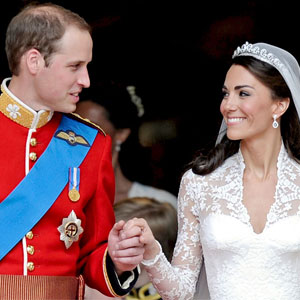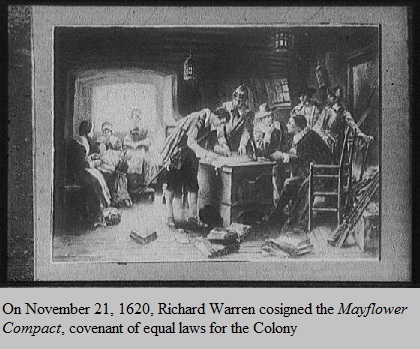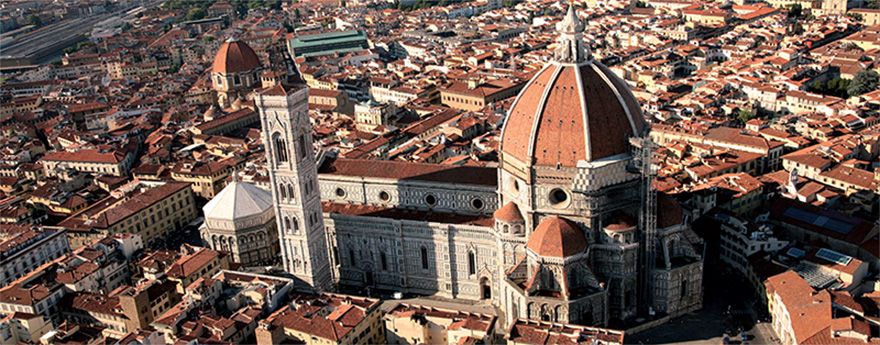Ivrea’s carnival is one of the most famous in the world. It’s a very unique tradition with an equally unique history. Since Ivrea is my hometown I have been quite acquainted with the festivities from a young age, and my sister even served as part of the committee at one point. Most of the photographs on this page were taken from either my sister or myself. Enjoy!
In 2016 the carnival celebrated its 209th edition, but its main history dates back to the end of the 12th century, in 1194 to be exact. The earliest beginnings of the Carnival are uncertain, but they do start in the 17th and 18th centuries. At the time, each of Ivrea’s five districts celebrated the occasion in their own unique way, but at the beginning of the 19th century, the free spirit to which this season gives great emphasis, eventually became a cause of concern to the French officials now in charge. In 1808, therefore, an alliance was imposed: a single city carnival would replace those celebrated in its several districts. The originator of this unification was to be allowed to deck himself out in the clothes of a General in Napoleon’s army, no less, and surround himself with a staff bearing an evident resemblance to Bonaparte’s entourage. Hence the way the carnival is celebrated to this day.
But… let’s get back to the real history of the Carnival. The first revolt was that of Violetta in 1194, a second revolt appears in the annals for 1266, when the men of Ivrea “expelled” the Marquis of Monferrato. This event is enshrined in the “Preda in Dora” ceremony described in the account of the Carnival of Ivrea that follows. But the most important and remembered event took place in 1194. At that time a Count that ruled the town, (Conte Ranieri di Biandrate) had made a new law to sleep with every new bride, he called it the “right of the first night” (yes… that story in “Braveheart” is true!!). Well, he got away with it until a miller’s daughter named Violetta rebelled against him. Violetta’s father ran one of the floating mills that once exploited the waters of the Dora. She killed him with a sword she had hidden under her dress, and then she proceeded in showing his cut off head to the people on top of the sword that cut his head, she then started a fire in the castle (Castellazzo), which started a revolt against the tyrant’s troops. They fought by mainly throwing stones to them, and they won.
That fight for liberty is recreated with the Battles of the Oranges, which substitute stones. Italy exceeds its production quota of oranges as agreed within the EEC (the European Economic Community) , so the excess needs to be destroyed (just to keep up the retail price). My co-citizens cooperate in the difficult path towards a unified Europe by helping to smash some oranges… This was at least true in the 90s. I was also told just recently that most of these oranges nowadays are not very good to eat and are grown specifically for this event every year. I don’t know which story is truer or if one was the case at one point and then the ladder, but the bottom line is that they do not take these oranges away from the market. A lot of them are old and not really eatable anyway. To make it fun there are several orange throwing “teams”, all sporting colorful uniforms and they are: Scacchi, (Chessmen), Scorpioni Arduini (Scorpions of Arduini-Arduino was the name of the old King), Picche (Spades), Diavoli (Devils), Tuchini (Birch?),Morte (Death), Mercenari
(Mercenaries), Pantere(Panthers) and Credenari(Believers?).
Imagine about 10,000 people dressed with colorful costumes, with a large blouse with a deep V opening in front: that’s where they keep the oranges they’re about to throw. They’re supposed to protect themselves from incoming oranges with their non-throwing arm. These people on foot are recreating the people of Ivrea revolting against the tyrant. The Count’s soldiers are represented by people on horse-pulled trucks (about 10-12 people on each carriage); these people are padded with american-football-type suits, and wear fencing-like masks. Since such a small number of these brave men have to fight hundreds… possibly even thousands of people on the ground, they have two advantages: the extra padding, and throwing downward from above,rather than upward from below. With the mask, their eyes can’t be directly hit. However, imagine how fun it must be to get freshly squeezed (on impact against the grid) orange juice right into your eyes…
An interesting fact is that this representation only started after WW2, beforehand, and only starting in the mid 19th century, people threw oranges from the balconies to the people walking by underneath… and viceversa.
Anyone can become “Eporediese” (someone that lives in Ivrea) during carnival time and become an orange-thrower just for fun. A lot of people in fact, do just that. The Battle of the Oranges is a quite interesting event, and oranges fly all over the place, some being thrown by people several meters away, and will hit just about anything: the enemies, the horses, the horse driver, the spectators on the other side of the carriage who think they’re safe, the buildings nearby (whose owners take special care in sealing all windows with wood panels; those who have recently repainted the outside walls, cover the endangered side with a net). A red hat is the symbol of liberty, and a sign of the carnival, everyone is supposed to wear one… and if anyone is guilty of not wearing it is considered an enemy, and quickly becomes the target of the carnival police, who punish the culprits with some well aimed oranges. Yikes!
Of course there is more to the carnival than the battle of the oranges. A young newly married woman of Ivrea’s high society volunteers to be cheered at as the heroine. Introduced in the Carnival’s celebration in 1858, she’s impersonating “Violetta”, the *Star* of the entire celebration. Violetta is called “mugnaia”, meaning “miller”. She gets to dress in white, be revered, and tour the city on a coach, throwing candies and mimosa posies by the thousand to the spectators.
The orange-throwing carriages are aligned at the end of a procession, after the Mugnaia: first the “Pifferi”, then various local folklore music bands, then people who juggle big flags, then, right before the orange-throwing carriages, the mugnaia (Violetta), in a gorgeous coach, surrounded by Cavalry in Napoleonic era suits. Each zone (district) of the city provides to the touring show two kids (called Abba`) to represent them: they’ll ride ponies wearing elegant costumes, with a sword in their hand, on top of which there’s an orange (macabre depiction of the Count’s fallen head). Then there are all the people who chose to dress with wild costumes or masks (as in the U.S.A. for Halloween, and it’s ok for adults too). There’s also all sorts of other (pseudo)-historical facts represented throughout the carnival period (thursday-tuesday). They’re bunched up together even though they belong to totally different époques.
In the evening of the last day of the carnival, Mardi Gras, the darkness is soon ended by the tongues of flame that soar up the scarli set alight by the Abbàs in their respective districts. The burning of the scarli (big poles, erected in the middle of each district’s square, covered with dry bushes) represent the burning of the tyrant’s castle and the declaration of freedom from each city quarter. The fire is ignited by the Abba` from that quarter, assisted by a cavalry officer. A smaller on-foot-only procession tours all the squares before reaching town hall, where the mugnaia is awaiting in front of the biggest scarlo. Piazza di Città (Town Hall), is filled to overflowing as the principal scarlo is lit. The Mugnaia stands erect, sword on high, in her gilded coach, while the General rises on his stirrups, one hand on his cocked hat in salute, until the last spark is extinguished.
 The final act is the burning of the scarlo in the parish of San Grato. The pipers lead the way to the sound of joyful tunes. Then, however, the band falls silent, and a single piper accompanied by a single drummer plays the sad notes of the “Funeral March” as everyone repairs towards Piazza Ottinetti in a gloomy silence rendered more poignant by the trailing swords of the officers of the General’s staff. Soon, however, the sadness vanishes. The pipes and drums strike up for the last time under the arcades of the piazza as people embrace and bid each other farewell with the traditional saying: “arvedse a giòbia a’n bòt” (good-bye till Thursday at one), an au revoir at next year’s carnival. The Carnival festivities, in fact, last from Thursday until Tuesday, every day filled with several parades and events.
The final act is the burning of the scarlo in the parish of San Grato. The pipers lead the way to the sound of joyful tunes. Then, however, the band falls silent, and a single piper accompanied by a single drummer plays the sad notes of the “Funeral March” as everyone repairs towards Piazza Ottinetti in a gloomy silence rendered more poignant by the trailing swords of the officers of the General’s staff. Soon, however, the sadness vanishes. The pipes and drums strike up for the last time under the arcades of the piazza as people embrace and bid each other farewell with the traditional saying: “arvedse a giòbia a’n bòt” (good-bye till Thursday at one), an au revoir at next year’s carnival. The Carnival festivities, in fact, last from Thursday until Tuesday, every day filled with several parades and events.
The Carnival also has a lot of parties, food events and music. There really is a lot to it. The fagiolata (beans) is an event that takes place often around the center of town, and they offer also sandwiches of many kinds. Then on the day after the last day of the carnival they have “polenta e merluzzo”, which is “fish and cornmeal” (and wine!) which is an absolutely delicious and traditional dish.
Listen to Ivrea’s Official Carnival Song! –>> Una Volta Anticamente
Here are the words of the song… go ahead, sing along!!!
Una volta anticamente Egli è certo che un Barone,
Ci trattava duramente Con la corda e col bastone;
D’in sull’alto Castellazzo, Dove avea covile e possa,
Sghignazzando a mo’ di pazzo Ci mangiava e polpa ed ossa.
Ma la figlia d’un mugnaro Gli ha insegnata la creanza,
Ché rapita ad uom più caro Volea farne la sua ganza.
Ma quell’altra prese impegno Di trattarlo a tu per tu:
Quello è stato il nostro segno E il castello non c’è più.
E sui ruderi ammucchiati Dame e prodi in bella mostra
Sotto scarli inalberati Noi veniamo a far la giostra;
Su quei greppi, tra quei muri, Che alla belva furon tana,
Suonan pifferi e tamburi La vittoria popolana.
Non v’è povero quartiere Che non sfoggi un po’ di gale,
Che non canti con piacere La Canzon del Carnevale.
Con la Sposa e col Garzone Che ad Abbà prescelto fu,
Va cantando ogni rione: Il Castello non c’è più.
~~~~~~~~~~~~~~~
–The website ‘2camels’ posted an earlier version of this story of the Carnival of Ivrea on their website. Thank you so much! –>> http://www.2camels.com/ivrea-carnival.php
–For my InDesign Class I had to make a flier/newsletter with extensive information about a subject and of course I picked the Carnival! Here it is for you to view (PDF Format)! –>> Ivrea’s Carnival Newsletter
Below is an excellent video, the official Trailer from a Documentary of the Carnival of Ivrea. A must watch!


































